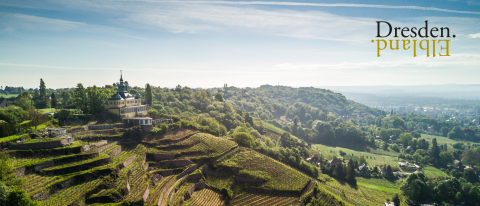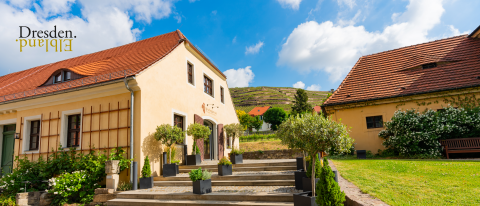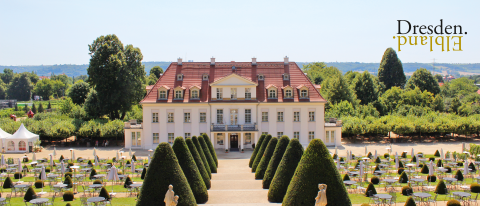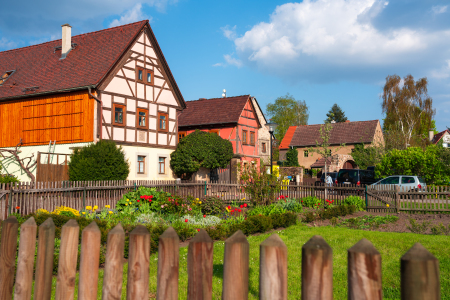Historic village green Zitzschewig
Zitzschewig is also one of the ten original villages of Radebeul and was first mentioned in a document in 1366.
There is evidence of an obligation in 1445 to supply , a tax in the form of grain, to the burgraves. From this it can be concluded that Zitzschewig originally belonged to the estate of the Burgrave of Dohna.
Even at the time it is first mentioned, the village was divided into two parts. One part belonged to the High Chapter of Meissen, the other to the Kundige family, who later sold their share to the Dresden Council. With a total of 31 estates, Zitzschewig had outgrown its historical center by the middle of the 15th century. Its location on the old Mühlberg-Dresden trade route favoured its development.
The community’s proximity to the Elbe regularly brought floods, which is why the first dams were built as early as 1555.
Viticulture also played an important role here at an early stage. In 1448, 40 vineyards were mentioned.
While the parish of Zitzschewig has always belonged to Kötzschenbroda, there is evidence that the community employed its own teacher after the Thirty Years' War.
Initially, the village derived scarcely any benefit from the construction of the railway. It was not until 1902 that a local station was established.




